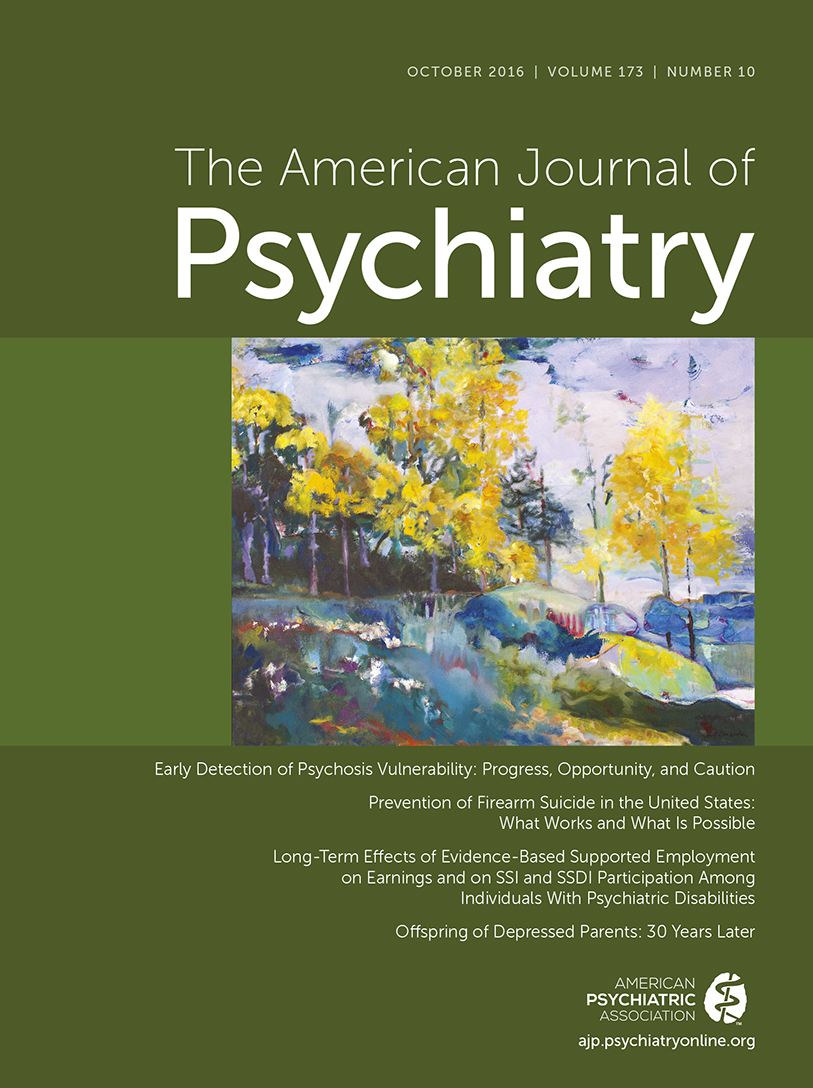Offspring of Depressed Parents: 30 Years Later
Abstract
Objective:
While the increased risk of psychopathology in the biological offspring of depressed parents has been widely replicated, the long-term outcome through their full age of risk is less known. The authors present a 30-year follow-up of biological offspring (mean age=47 years) of depressed (high-risk) and nondepressed (low-risk) parents.
Method:
One hundred forty-seven offspring of moderately to severely depressed or nondepressed parents selected from the same community were followed for up to 30 years. Diagnostic assessments were conducted blind to parents’ clinical status. Final diagnoses were made by a blinded M.D. or Ph.D. evaluator.
Results:
The risk for major depression was approximately three times as high in the high-risk offspring. The period of highest risk for first onset was between ages 15 and 25 in both groups. Prepubertal onsets were uncommon, but high-risk offspring had over 10-fold increased risk. The early onset of major depression seen in the offspring of depressed parents was not offset by later first onsets in the low-risk group as they matured. The increased rates of major depression in the high-risk group were largely accounted for by the early onsets, but later recurrences in the high-risk group were significantly increased. The high-risk offspring continue to have overall poorer functioning and receive more treatment for emotional problems. There was increased mortality in the high-risk group (5.5% compared with 2.5%) due to unnatural causes, with a nearly 8-year difference in the mean age at death (38.8 years compared with 46.5 years).
Conclusions:
The offspring of depressed parents remain at high risk for depression, morbidity, and mortality that persists into their middle years. While adolescence is the major period of onset for major depression in both risk groups, it is the offspring with family history who go on to have recurrences and a poor outcome as they mature. In the era of personalized medicine, until a more biologically based understanding of individual risk is found, a simple family history assessment of major depression as part of clinical care can be a predictor of individuals at long-term risk.



